Filter by

Culinology : the intersection of culinary art and food science
Machine generated contents note: Foreword Preface: So What the Heck is Culinology(r), Anyway? Acknowledgements Chapter 1: The Business of New Product Development and The Role of the Culinology(r) Professional Chapter 2: The Principles of Food Science Chapter 3: Applying Food Science to Cooking Chapter 4: Protein-Based Foods: Introduction and Red Meats Chapter 5: Protein-Based Foods: Poultry Cha…
- Edition
- -
- ISBN/ISSN
- 9780470481349
- Collation
- xiii, 418 p. : ill. ; 29cm
- Series Title
- -
- Call Number
- 664.07 Cou c
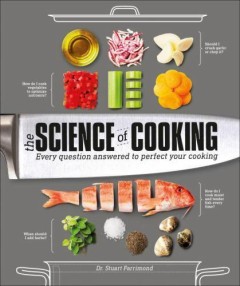
The science of cooking : every question answered to perfect your cooking
- Edition
- -
- ISBN/ISSN
- 9781465463692
- Collation
- 256 p. : ill. : ind. ; 26 cm.
- Series Title
- -
- Call Number
- 641.3 Far s
- Edition
- -
- ISBN/ISSN
- 9781465463692
- Collation
- 256 p. : ill. : ind. ; 26 cm.
- Series Title
- -
- Call Number
- 641.3 Far s
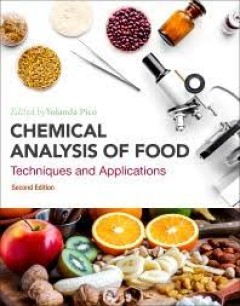
Chemical analysis of food : techniques and applications
- Edition
- Second edition
- ISBN/ISSN
- 9780128132661
- Collation
- xvii, 889 p. : ill. : ind. ; 24 cm.
- Series Title
- -
- Call Number
- 664.07 Che
- Edition
- Second edition
- ISBN/ISSN
- 9780128132661
- Collation
- xvii, 889 p. : ill. : ind. ; 24 cm.
- Series Title
- -
- Call Number
- 664.07 Che

Development of milk-based product
- Edition
- -
- ISBN/ISSN
- -
- Collation
- ix, 59 p. : ill. ; 28 cm.
- Series Title
- -
- Call Number
- 664 Ani d
- Edition
- -
- ISBN/ISSN
- -
- Collation
- ix, 59 p. : ill. ; 28 cm.
- Series Title
- -
- Call Number
- 664 Ani d

Agricultural & food chemistry : past, present, future
- Edition
- -
- ISBN/ISSN
- 0870552317
- Collation
- xv, 458 p. : ill. ; 24 cm.
- Series Title
- -
- Call Number
- 630.24 Ter a
- Edition
- -
- ISBN/ISSN
- 0870552317
- Collation
- xv, 458 p. : ill. ; 24 cm.
- Series Title
- -
- Call Number
- 630.24 Ter a

Food and nutrition : home economics
- Edition
- -
- ISBN/ISSN
- 997194751X
- Collation
- 140 p.; ilus.: 21 cm
- Series Title
- -
- Call Number
- 612.3 Cre f
- Edition
- -
- ISBN/ISSN
- 997194751X
- Collation
- 140 p.; ilus.: 21 cm
- Series Title
- -
- Call Number
- 612.3 Cre f

Food pharmacology
- Edition
- -
- ISBN/ISSN
- -
- Collation
- xiii, 183 p. illus. 24 cm.
- Series Title
- -
- Call Number
- 615.9 Sap f
- Edition
- -
- ISBN/ISSN
- -
- Collation
- xiii, 183 p. illus. 24 cm.
- Series Title
- -
- Call Number
- 615.9 Sap f

Essentials of food science
The fourth edition of this classic text continues to use a multidisciplinary approach to expose the non-major food science student to the physical and chemical composition of foods. Additionally, food preparation and processing, food safety, food chemistry, and food technology applications are discussed in this single source of information. The book begins with an Introduction to Food Compon…
- Edition
- 4th
- ISBN/ISSN
- 9781461491378
- Collation
- xxiv, 495 p. : ill. ; 26 cm.
- Series Title
- -
- Call Number
- 664.07 Vac e
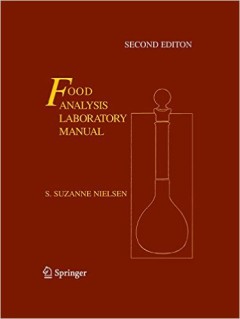
Food analysis laboratory manual
This second edition laboratory manual was written to accompany Food Analysis, Fourth Edition, ISBN 978-1-4419-1477-4, by the same author. The 21 laboratory exercises in the manual cover 20 of the 32 chapters in the textbook. Many of the laboratory exercises have multiple sections to cover several methods of analysis for a particular food component of characteristic. Most of the laboratory exerc…
- Edition
- 2nd
- ISBN/ISSN
- 9781441914620
- Collation
- ix, 177 p. ; 28 cm.
- Series Title
- -
- Call Number
- 664.07 Foo
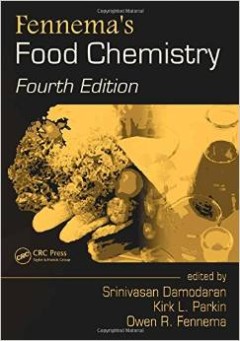
Fennema's food chemistry
This latest edition of the most internationally respected reference in food chemistry for more than 30 years, Fennema’s Food Chemistry once again meets and surpasses the standards of quality, comprehensive information set by its predecessors. This edition introduces new editors and contributors, who are recognized experts in their fields. All chapters reflect recent scientific advances and, w…
- Edition
- 4th ed.
- ISBN/ISSN
- 9780849392726
- Collation
- xi, 1144 p. : ill. : ind. ; 26 cm.
- Series Title
- -
- Call Number
- 664 Fen
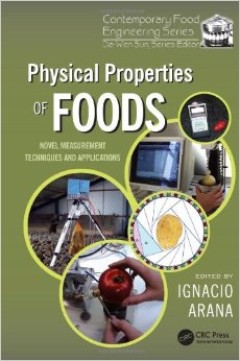
Physical properties of foods
With higher food quality in increasing demand by consumers, there is continuous pressure on food engineers to meet market needs. One of the critical challenges is to use modern technology and knowledge to develop new processes for improving food quality. Given the global food marketplace, there is also a greater need for a means of objectively classifying and differentiating foods. Physical pro…
- Edition
- -
- ISBN/ISSN
- 9781439835364
- Collation
- xiv, 406 p. : ill. : ind. ; 24 cm.
- Series Title
- -
- Call Number
- 664.07 Ara p

Food : the chemistry of its components
As a source of detailed information on the chemistry of food this book is without equal. With a Foreword written by Heston Blumenthal the book investigates food components which are present in large amounts (carbohydrates, fats, proteins, minerals and water) and also those that occur in smaller amounts (colours, flavours, vitamins and preservatives). Food borne toxins, allergens, pesticide resi…
- Edition
- 5th
- ISBN/ISSN
- 9780854041114
- Collation
- xix, 501 p. : ill. : ind. ; 25 cm.
- Series Title
- -
- Call Number
- 664 Cou f
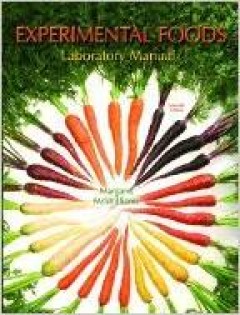
Experimental foods laboratory manual seventh edition
This manual presents laboratory experiments designed to illustrate the various principles of food science that are discussed in McWilliam's Foods: Experimental Perspectives, Sixth Edition. Each experiment includes: learning objectives, clear and precise instructions, evaluation techniques; sensory evaluation; operation of laboratory equipment, charts for recording the experimental data, and stu…
- Edition
- Seventh Edition
- ISBN/ISSN
- 9780132353281
- Collation
- xii, 405 p. : ill. ; 28 cm.
- Series Title
- -
- Call Number
- 663 Mcw e

Confectionery and chocolate engineering: principles and engineering
Confectionery and chocolate manufacture has been dominated by large-scale industrial processing for several decades. It is often the case, though, that a trial and error approach is applied to the development of new products and processes, rather than verified scientific principles. The purpose of this book is to describe the features of unit operations used in confectionary manufacturing. In …
- Edition
- -
- ISBN/ISSN
- 9781405194709
- Collation
- xx, 688 p. : ill. : ind. ; 25 cm.
- Series Title
- -
- Call Number
- 641.86 Moh c
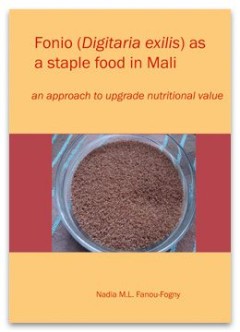
Fonio (Digitaria Exilis) as a staple food in Mali : an approach to upgrade nu…
- Edition
- -
- ISBN/ISSN
- 978-94-6173-292-7
- Collation
- -
- Series Title
- -
- Call Number
- 612.3 Nad f
- Edition
- -
- ISBN/ISSN
- 978-94-6173-292-7
- Collation
- -
- Series Title
- -
- Call Number
- 612.3 Nad f
 Computer Science, Information & General Works
Computer Science, Information & General Works  Philosophy & Psychology
Philosophy & Psychology  Religion
Religion  Social Sciences
Social Sciences  Language
Language  Pure Science
Pure Science  Applied Sciences
Applied Sciences  Art & Recreation
Art & Recreation  Literature
Literature  History & Geography
History & Geography